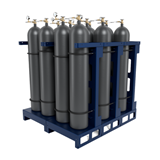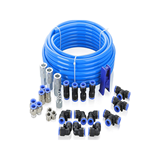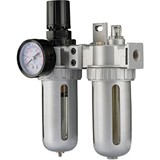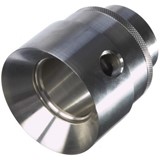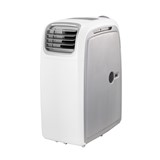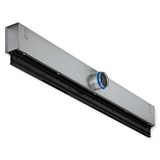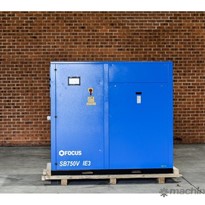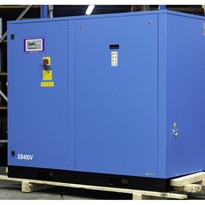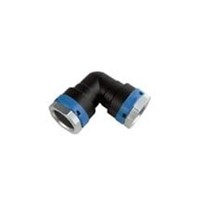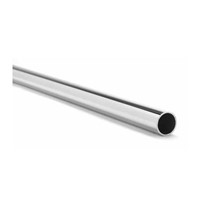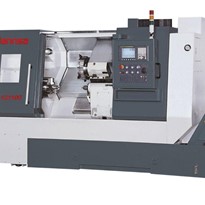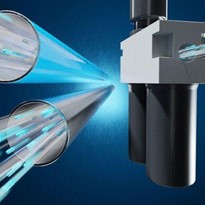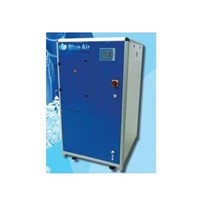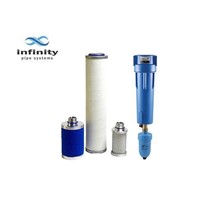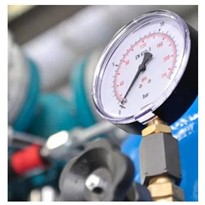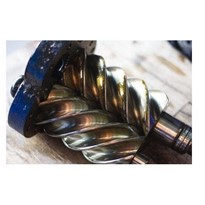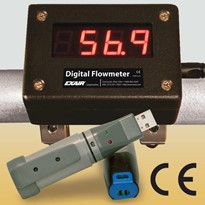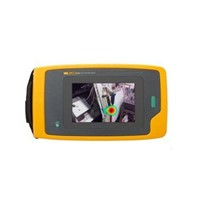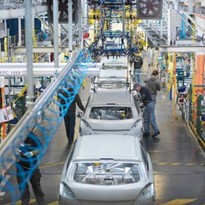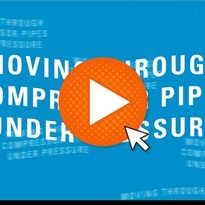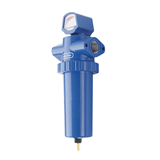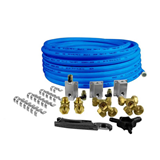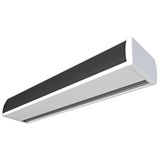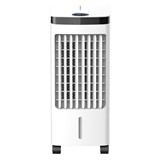1. Choose The Right Compressor Size
Running an oversized compressor results in excess energy consumption because it operates beyond your actual air demand. Compressors that are too large not only waste power, but also increase the wear on parts like motors and filters due to frequent cycling. By using tools like compressed air calculators, you can precisely measure your air requirements and select a compressor that aligns with your actual usage. This ensures you’re not paying for unutilised capacity while also prolonging the lifespan of your equipment?.
2. Opt for Variable Speed Drives (VSD)
Unlike fixed-speed compressors, which always run at full capacity regardless of actual demand, variable speed drive (VSD) compressors adjust their speed based on real-time air consumption. This results in significant energy savings, especially in applications where air demand fluctuates. VSD compressors help lower energy consumption during low-demand periods, reducing costs. While these systems have a higher upfront cost compared to fixed-speed options, they deliver substantial long-term savings through reduced electricity use and less wear on the motor?.
3. Reduce Leaks
Leaks in compressed air systems are a silent cost driver, with some systems losing up to 30% of their air through undetected leaks. These leaks force compressors to work harder, consuming more energy and increasing wear. Regular inspections are crucial to identifying these inefficiencies. Investing in a leak detection system or service can help you quickly find and repair leaks. Proactive leak management not only reduces energy costs but also improves overall system performance and reliability?.
4. Implement a Maintenance Program
A consistent maintenance program is essential for keeping your compressed air system running efficiently. Scheduled maintenance checks prevent unexpected breakdowns and ensure the system operates at optimal levels. Regular servicing including filter changes, lubrication, and part replacements can help minimise downtime and repair costs. Preventative maintenance also helps avoid costly emergency repairs and extends the lifespan of your equipment by catching minor issues before they become major problems.
5. Use Energy-Efficient Compressors
Energy-efficient compressors, such as those with heat recovery or VSD features, are designed to reduce power consumption without sacrificing performance. These compressors may come at a higher initial price but offer significant long-term savings. Modern energy-efficient models can recover and reuse up to 90% of the energy generated during compression, minimising wastage. This translates into lower electricity bills, improved sustainability, and a reduced carbon footprint?.
6. Recover Heat
During operation, industrial air compressors produce a large amount of heat, most of which is typically wasted. Installing a heat recovery system allows you to capture this excess energy and repurpose it for other uses, such as heating water or warming workspaces. This can reduce your energy costs by up to 90%, as you’re utilising a resource that would otherwise go unused. By tapping into heat recovery, you not only lower your energy expenses but also improve your facility’s overall energy efficiency?.
7. Optimise System Pressure
Running your compressor at higher-than-needed pressures doesn’t just consume more energy, it can also increase wear and tear on system components. Every 1 bar of unnecessary pressure results in around 7-10% more energy consumption. By optimising your system to operate at the lowest effective pressure, you can reduce both energy usage and the stress placed on parts. Installing pressure regulators and carefully monitoring pressure settings ensures that your system operates within an optimal range.
8. Monitor and Control Air Usage
A centralised monitoring and control system helps track air consumption across your entire facility in real-time. These systems can detect inefficiencies and automatically adjust the compressor’s output to match demand, preventing overproduction and wasted energy. By continuously monitoring air usage, you can spot trends, identify peak demand periods, and adjust operations accordingly. This approach ensures that you are only producing as much air as necessary, avoiding unnecessary wear on the equipment?.
9. Invest in High-Quality Piping
Air distribution systems are often overlooked, but poor quality or improperly installed piping can result in pressure drops and leaks that force your compressor to work harder. High-quality piping materials like aluminium or stainless steel minimise friction, reducing the likelihood of pressure loss over distance. Properly designed piping systems also prevent air leaks at joints and connections. Investing in durable, high-quality pipes improves overall system efficiency and reduces the need for frequent repairs?.
10. Train Your Staff
Properly trained staff are a key element in maintaining the efficiency of your air compressor system. Employees who understand how the system works can identify potential problems early, operate the equipment efficiently, and ensure compressors are shut down when not in use. Regular training on maintenance protocols and energy-saving practices can greatly reduce unnecessary energy consumption and help prolong the lifespan of your equipment. Empowering your team to take ownership of the system’s health reduces both operational costs and downtime?.


